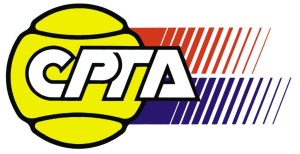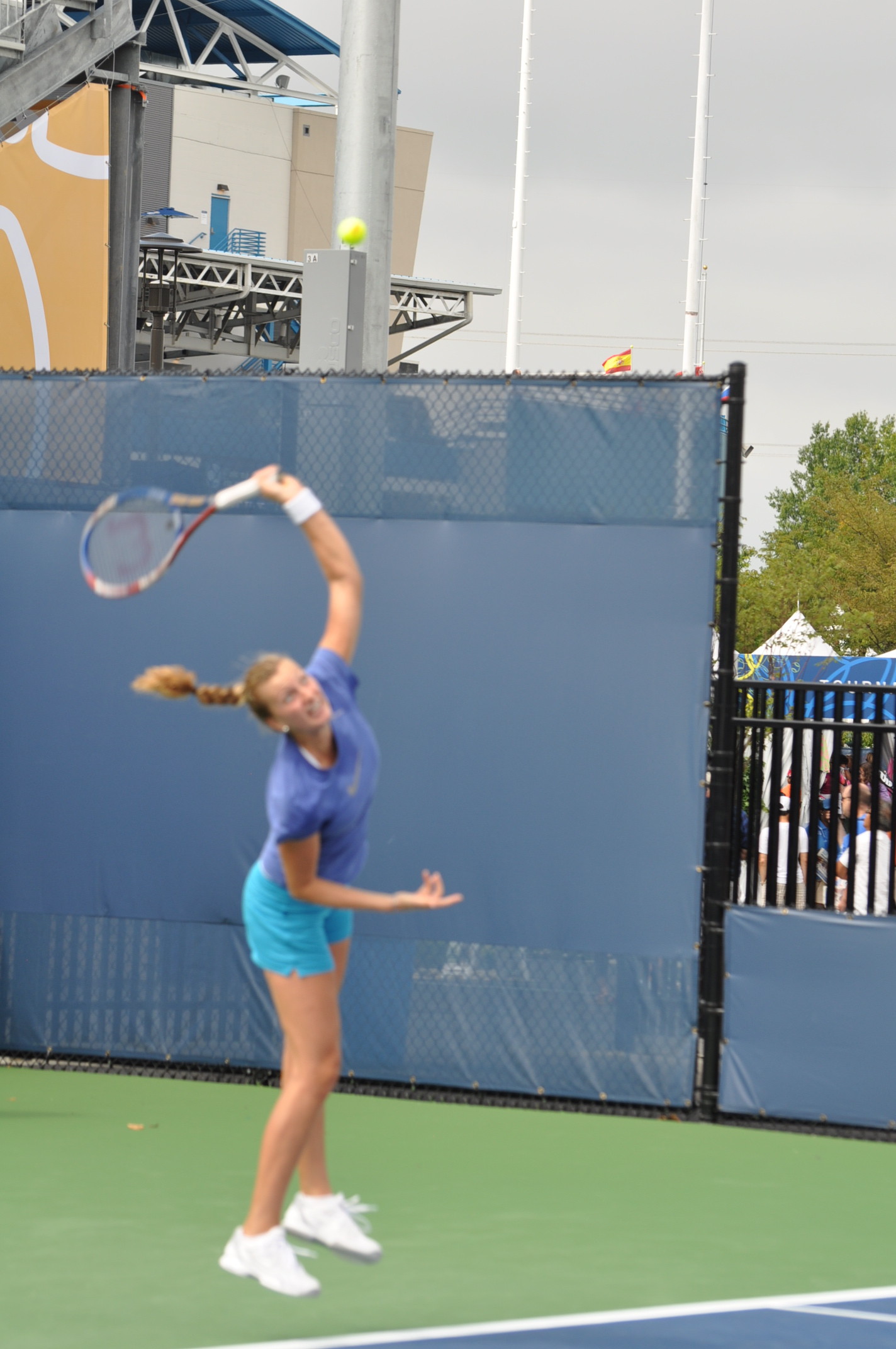
Petra's favorite strokes are the service and the backhand, which is a great combination for her as a left-handed player. Her forehand is a bit mistake prone, as I did write about it in one of the previous articles here. Below, I am showing some important details from Petra's dominant service through the years, from her so far the most successful 2011 season and then some rather recent ones. And there are some developments to be spotted...

The one-handed backhand can be considered as Stefanos' signature stroke. He belongs to the rather small group of the young players playing the one-handed stroke on the backhand side. In general, the one-handed backhand variety gives a better chance for the acceleration but can be also rather more challenging...
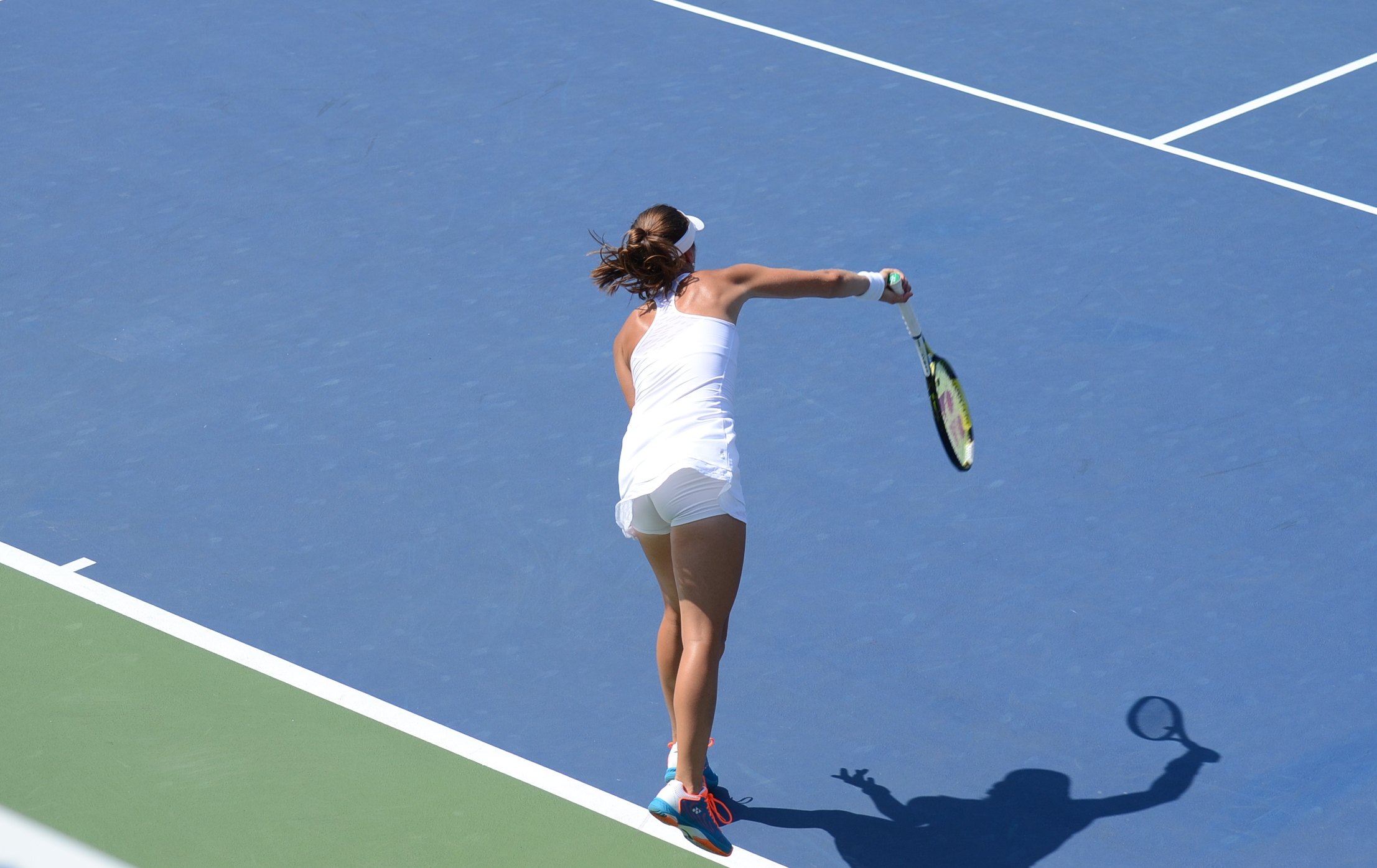
For many years, the service could have been considered as Martina's biggest weakness, mainly due to a suboptimal form of the pronation with the elbow staying rather too low and the racket traveling rather too much on the horizontal plane after the impact. Over the course of the years, Martina was able to improve it a bit and her pronation did look much better later in her career. With the elbow.....

One of the bases of Jelena's success is her powerful forehand, which was clicked as having higher average speed than the forehands of the men's #1 seed Andy Murray (GBR) during the 2017 French Open. Jelena's forehand has an excellent foundation with a form of the takeback/backswing, which is bringing the racket into the appropriate hitting position very early. She doesn't have any potentially disturbing....
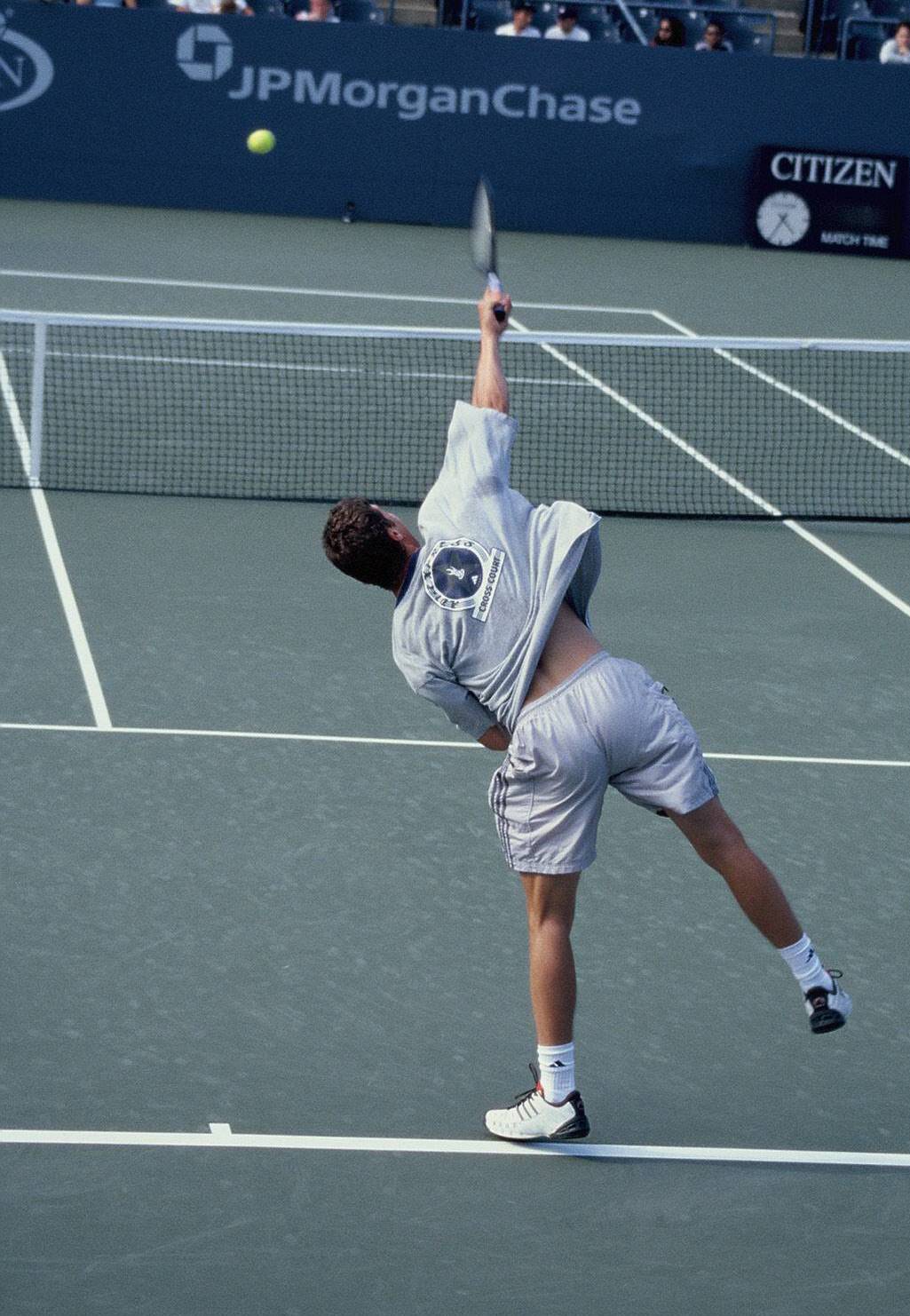
..Marat's service belonged to the most dangerous ones on the tour. His body size of 193 cm (6'4'') was surely very helpful, but also his service technique was very solid and Marat was well fulfilling the Service 3.0 requirements. As unstable as Marat was in general, his 1st service percentage through his career was just 55%, but of those 1st services in, he has had a 75% winning percentage and also his ace probability of 67% was quite high...
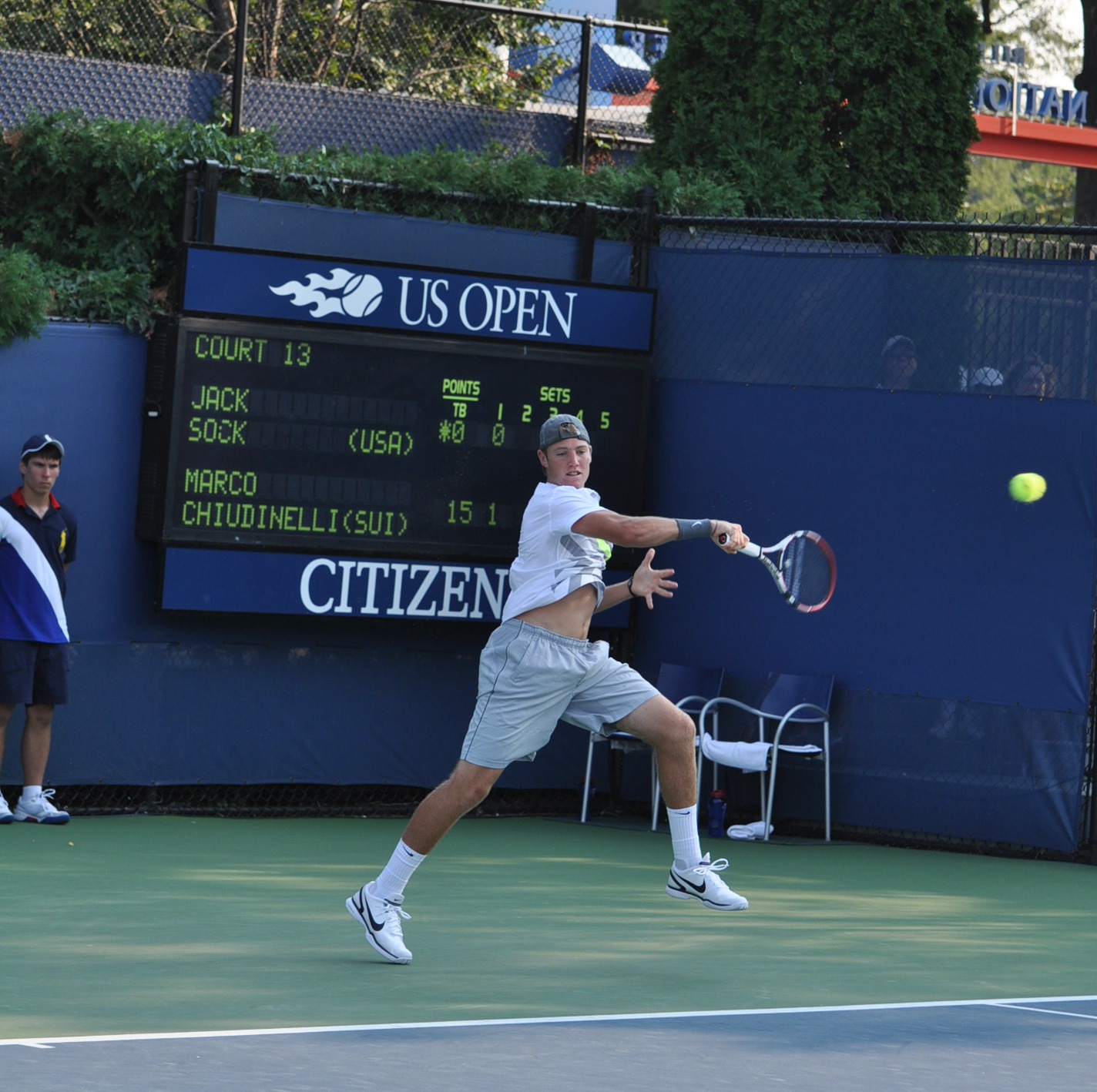
..back then, I was quite impressed by Jack's forehand, which he was unlike most other young Americans of his generation (Harrison, Young, Kudla, etc.) dominating rather by the body than by the arm action. He seemed to me like one who was able to stay immune to the widespread "infection" of the technique focusing at highest possible racket head speed and largely ignoring the importance of the body energy for the successful combination of power and stability/control in the strokes. It was, besides others, also Jack who brought me to the development of the model for the ideal body energy dominated modern forehand - Forehand 3.0...

The very well developed essential elements of a good service are here mainly a well-controlled toss, excellent eye control of the ball, a good build-up of a tension in the body and a sound understanding of the targeted pronation channeling energy against the target in the first part of the follow through. Such a solid Service 3.0 is an excellent base for further growth and shows that good developmental technical work on service was done with Kayla in the past.
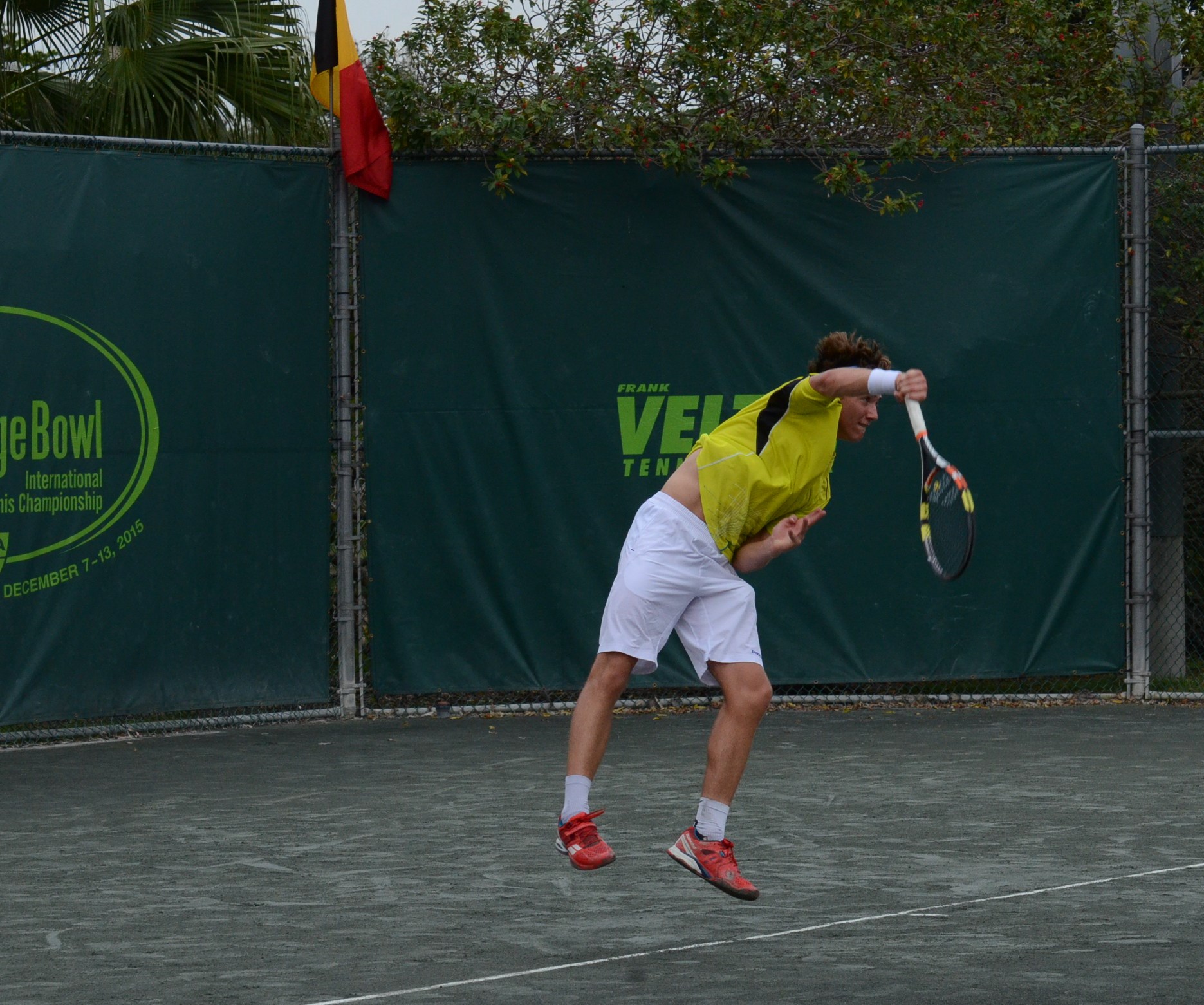
Photos below show Casper's service during 2015 Orange Bowl. Even thought that his service was not that dominant back then, the most important basic characteristics of the Service 3.0 were already there at that time and provided a solid base for further development/improvement. The most important among them is the proper understanding of the "follow through 1" with a well-executed (well-pronounced) targeted pronation.
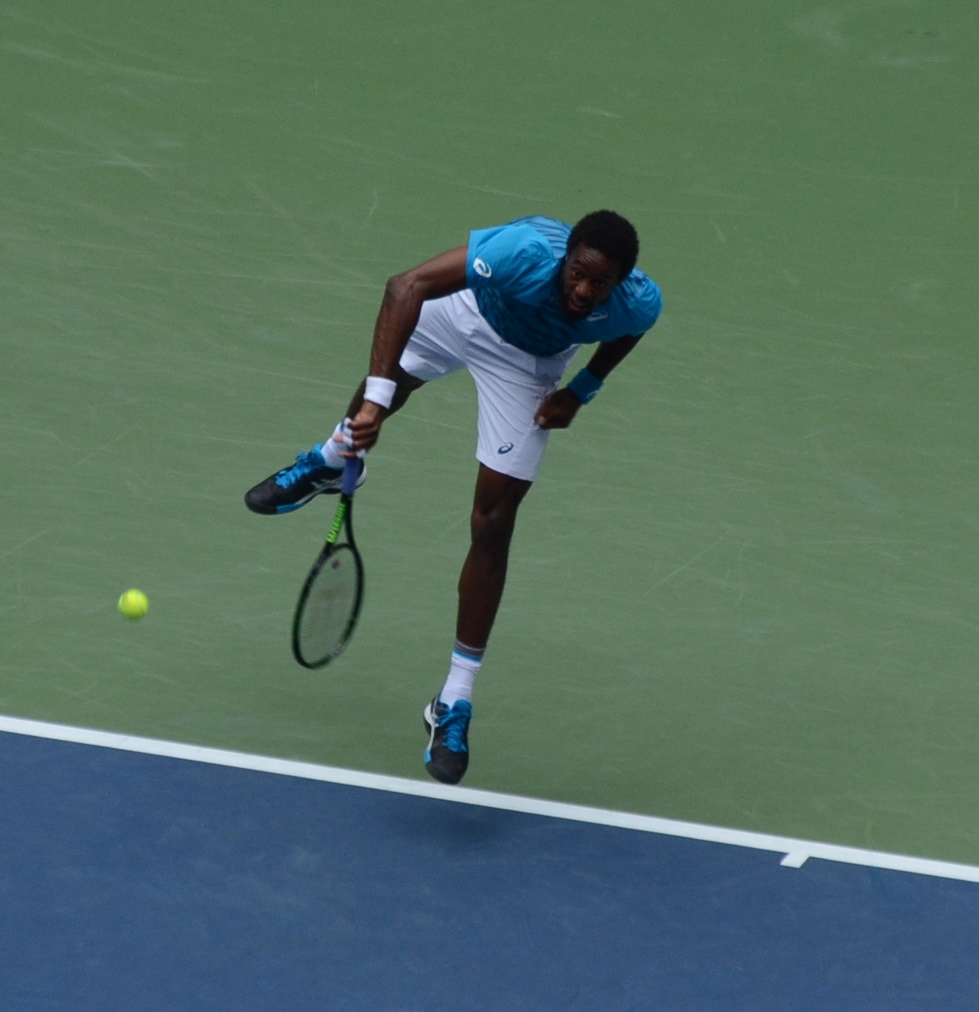
Gael belongs to the best servers on the pro tour and his service mostly perfectly fulfills the highest Service 3.0 criteria of body energy dominance of the stroke. A typical sign of this is Gael's excellent targeted pronation in the "follow through 1". He appears to have discovered the essential aspects of the TENNIS 3.0 CODE for the service.
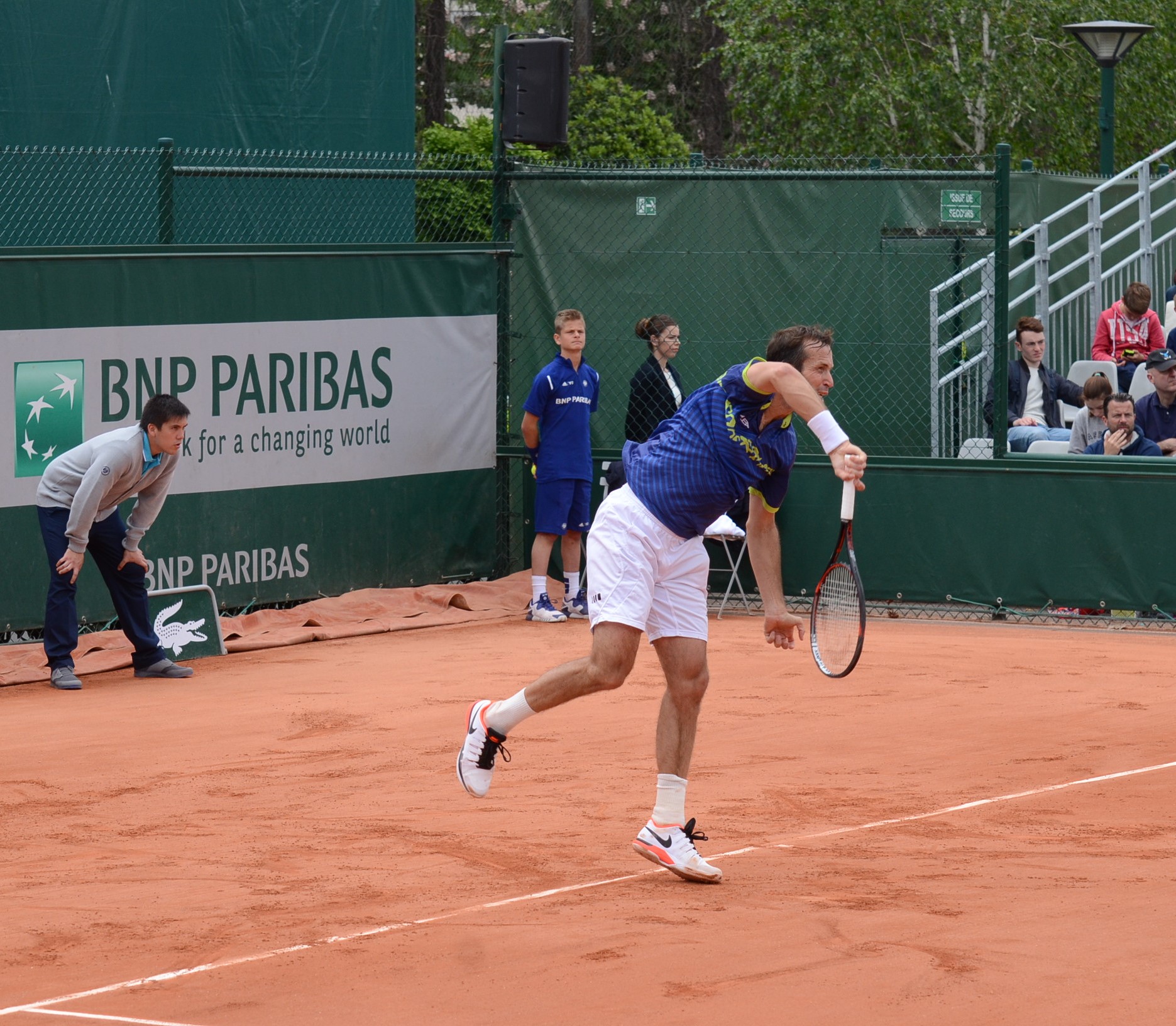
This former top 10 player in both singles and doubles as well as twice Davis Cup Champion with the team of the Czech Republic belongs to the best servers on the Tour from the technical point of view. Despite his just average body size of 185cm (6'1''), he has a quite high career ace probability of 51% per game played.

